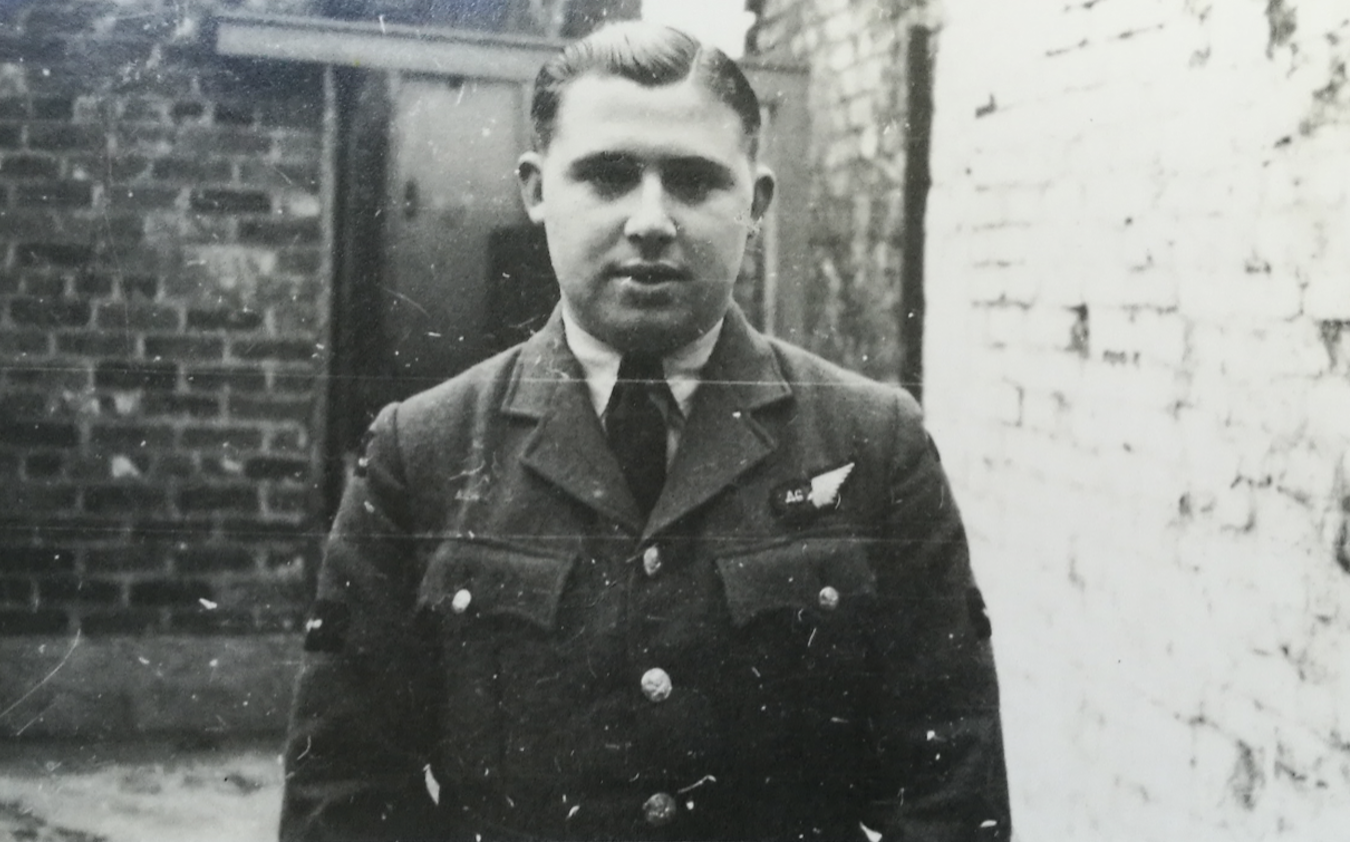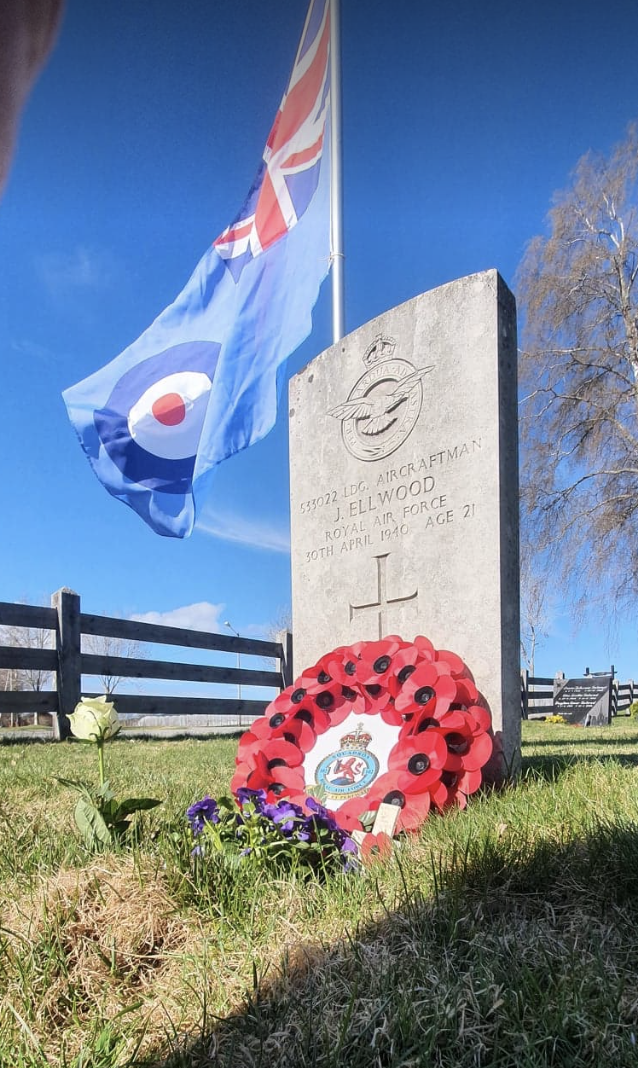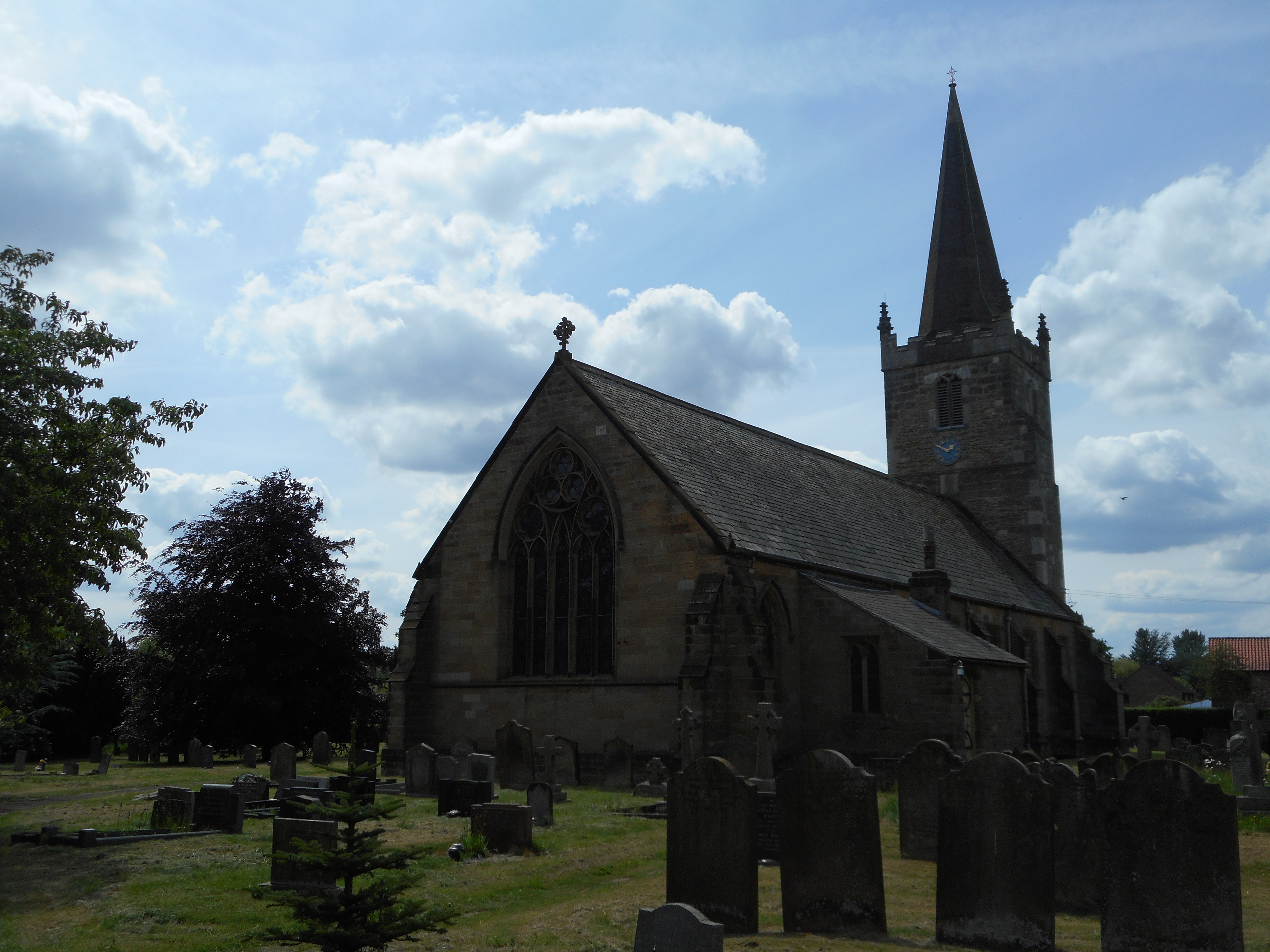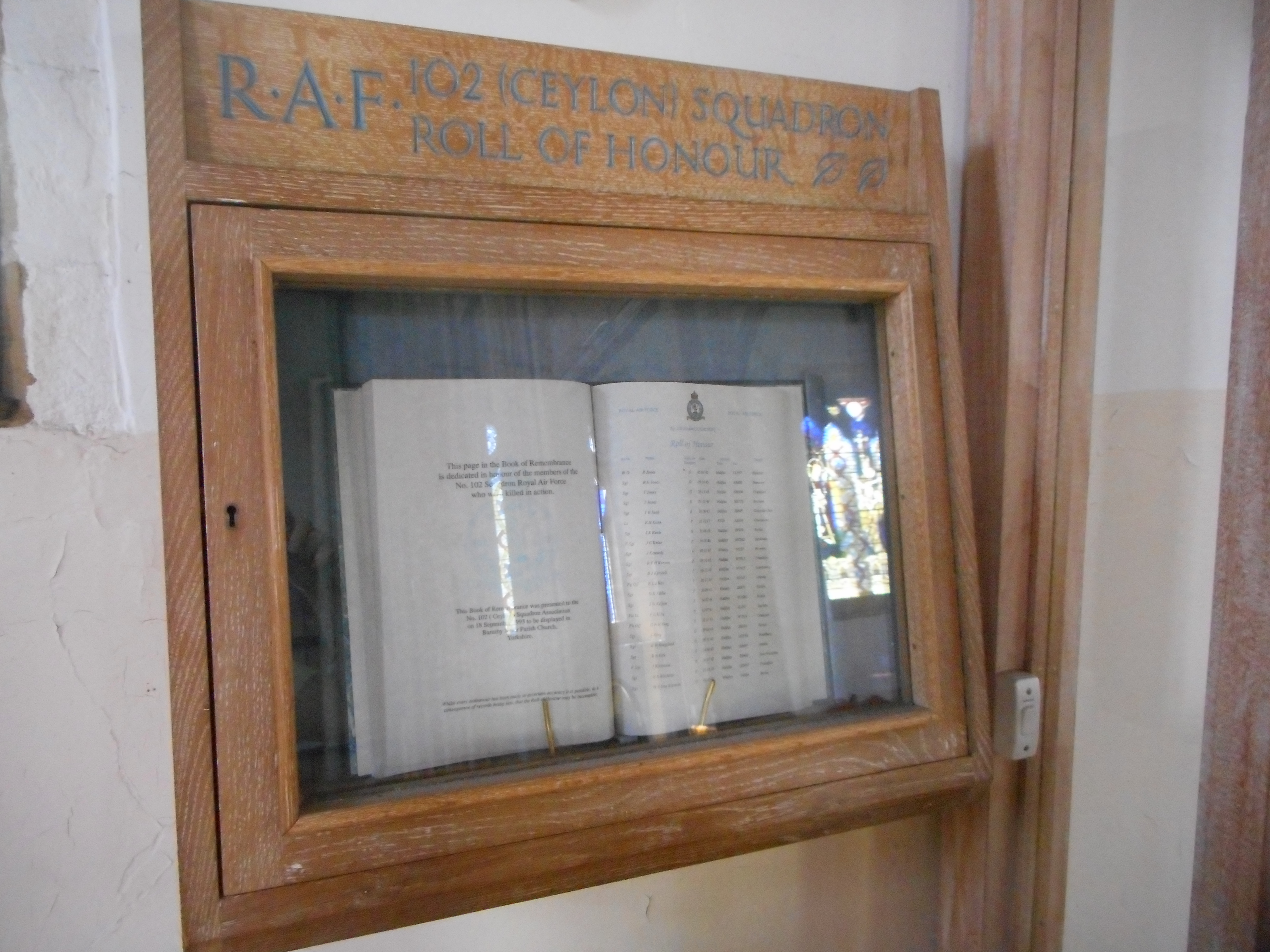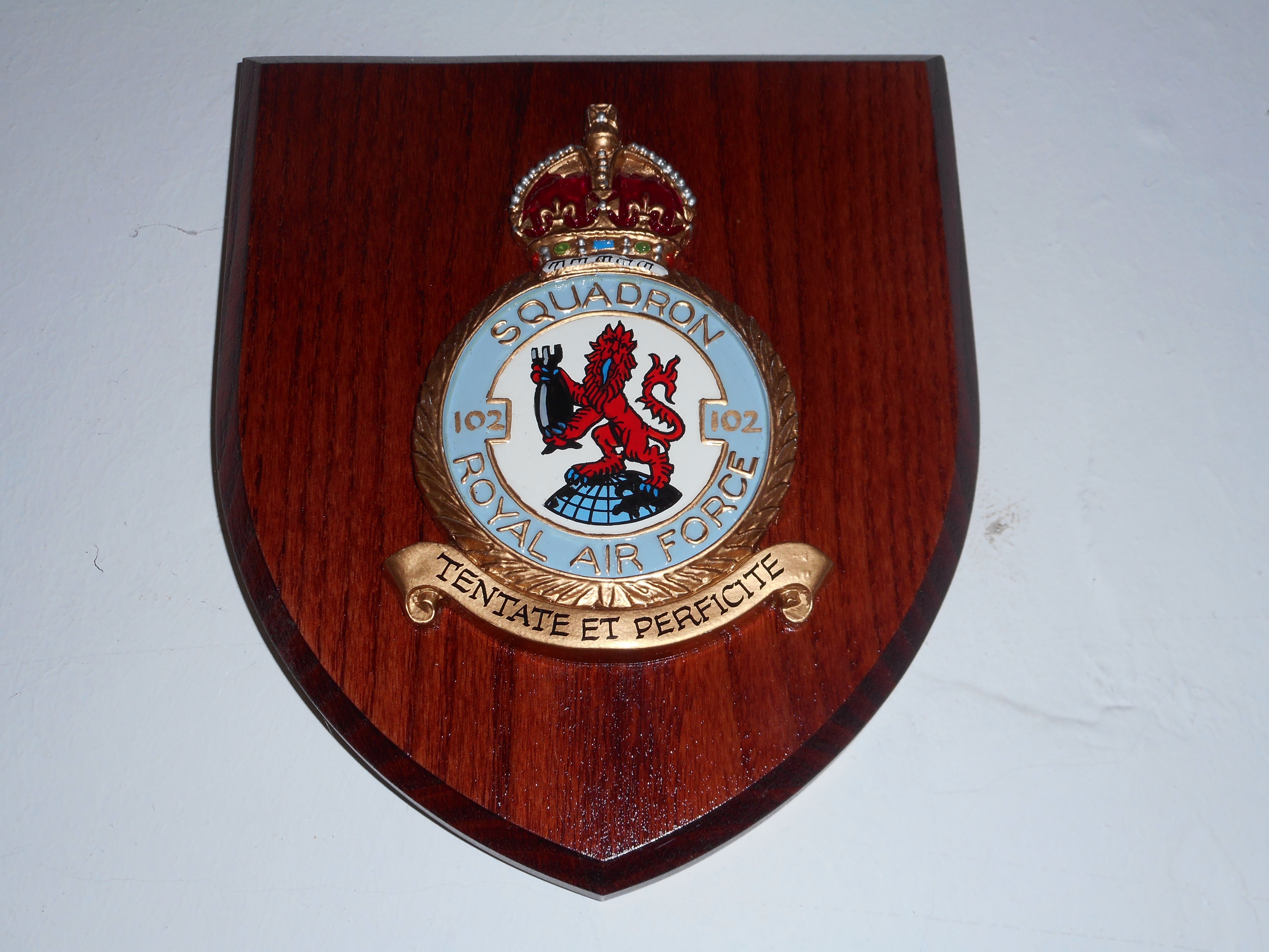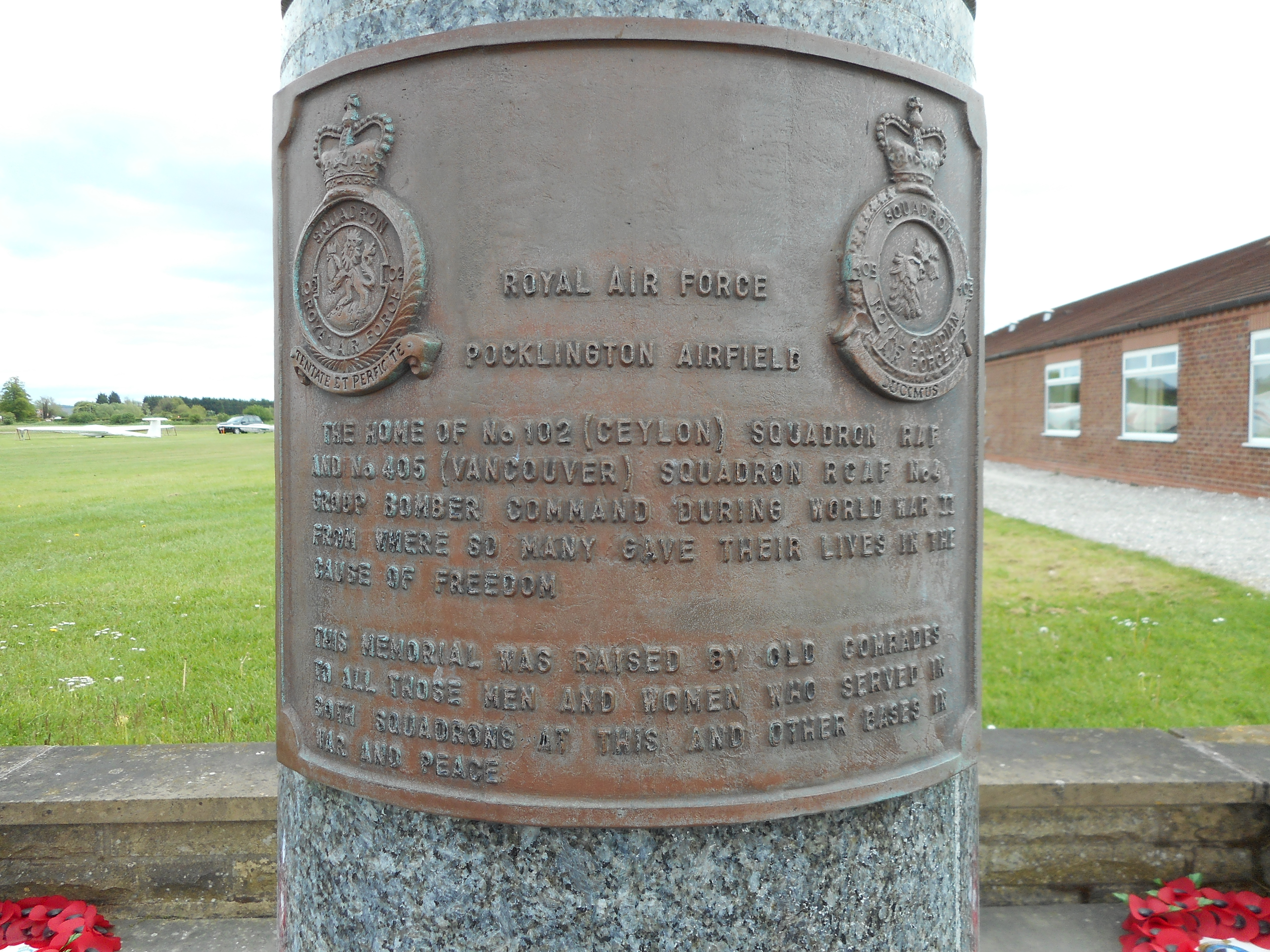Ellwood, John
Personal Information
| Rank | LAC |
| Forename(s) | John |
| Surname | Ellwood |
| Gender | M |
| Age | 21 |
| Decorations | |
| Date of Death | 30-04-1940 |
| Next of Kin | Son of William Arnold Ellwood and Catherine Ellwood (née Grisdale), of Warcop, Westmorland. |
Aircraft Information
| Aircraft | Armstrong Whitworth Whitley V |
| Serial Number | N1421 |
| Markings | DY-C |
Memorial Information
| Burial/Memorial Country | Norway |
| Burial/Memorial Place | Sylling Churchyard |
| Grave Reference | Grave 1 |
| Epitaph | WHAT WE KNOW NOT NOW WE SHALL KNOW HEREAFTER. "THY WILL BE DONE" |
IBCC Memorial Information
| Phase | 2 |
| Panel Number | 160 |
Enlistment Information
| Service Number | 533022 |
| Service | Royal Air Force |
| Group | 4 |
| Squadron | 102 (Ceylon) |
| Trade | WOp/AG |
| Country of Origin | United Kingdom |
Other Memorials
| Location | St. Catherine's Church Barmby Moor, East Yorkshire |
| Country | United Kingdom |
| Memorial Type | Roll of Honour in wall mounted wooden case, Sqn Badge above |
| Memorial Text | 102 (Ceylon) Sqn Roll of Honour and Sqn badge |
| Location | Pocklington Gliding Club, Pocklington Airfield, Easy Yorkshire |
| Country | United Kingdom |
| Memorial Type | Stylised Memorial with inscribed metal plaque |
| Memorial Text | Memorial to 102 (Ceylon) Sqn RAF and 405 (Vancouver) Sqn RCAF which served at RAF Pocklington during WW2 |
Miscellaneous Information
| John’s mother died when he was a baby, and he was raised on Eden Gate Farm, Warcop, with Catherine’s father, Tom Grisdale, a farmer and Methodist lay preacher, as his guardian. In 1930, aged eleven, he transferred from Warcop School to Appleby Grammar School with a Westmorland scholarship. John reached the fifth form, but did not pass his School Certificate in 1934 and left school in July, aged fifteen, becasue he was ‘needed at home on the farm’. A popular lad in the village, John played football for Warcop and billiards for Kirkby Stephen Conservative Club before joining the RAF in 1936. On the night of 29 April 1940 he was tail gunner in a Whitley Mk V bomber which took off from RAF Kinloss across the North Sea, its target the Oslo airfield in German-occupied Norway. Last reported 130 miles from the Norwegian coast, the aircraft encountered heavy flak and night fighters, its engines cut out and it hit the ground some 20 miles from Oslo. John’s body was found at the crash site. He had been hit by a bullet and probably died before the plane went down. His four fellow crew survived and were taken prisoner by the Germans. |
| On the day that John failed to return a letter was sent to his father from R.A.F. Record Office. Confirmation of his death followed, and on 9 June a united memorial service was held at Warcop Methodist Chapel, with the Vicar of Warcop reading the lessons. Not until 1946, when the war was over, did the Ellwoods know that John had a grave in Stylling churchyard. In 1949 John’s father received a letter from Squadron Leader K. Murphy, reporting that he had visited the grave, photographs of which he enclosed. ‘I can only add that if I had to choose some place in which to be buried myself I would like [to be] there … Nothing breaks the magnificent peace and quiet beauty of this place except the noise of the birds, or the lowing of the cattle as they come to the barn for milking – sounds to which he was well accustomed in his young life’. |
| His epitaph reads "What we know not now we shall know hereafter. Thy will be done". |
Commonwealth War Graves Commission
The National Archives
Last Operation Information
| Start Date | 29-04-1940 |
| End Date | 30-04-1940 |
| Takeoff Station | Kinloss |
| Day/Night Raid | Night (44% moon) |
| Operation | Oslo-Fornebu airfield |
| Reason for Loss | Eyewitnesses describe how the aircraft was seen passing overhead on fire with ammunition exploding on board due to the heat. It then circled over the nearby hills to give the other crew members chance to put out the fire. One of the engines was on fire and the pilot later wrote in his logbook that he had no way to control the aircraft. He ordered two of the men to abandon and they complied before the aircraft made a wide turn and then exploded. It crashed near Sylling, west of Oslo. Villagers headed to the scene through snow up to their waists. They found LAC Ellwood lying dead outside of the aircraft. A doctor in the search party examined his body and concluded that he sustained fatal injuries before the aircraft crashed. The other four crew members survived to become PoW. |
